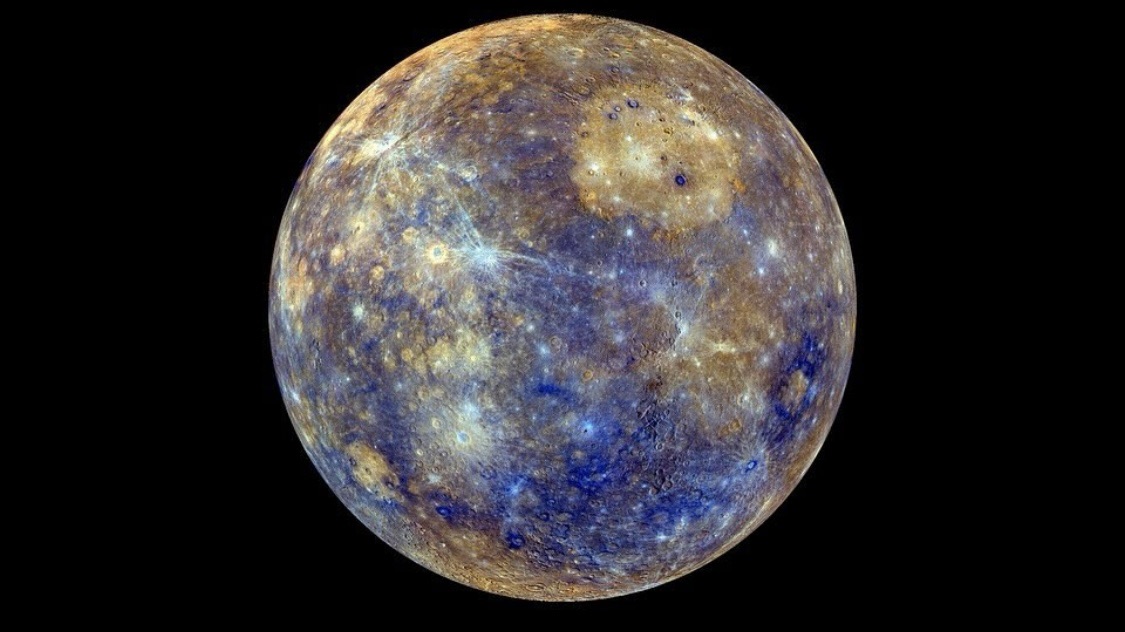Mercury, the closest planet to the Sun, is visible in this color-enhanced map created using data from the MESSENGER spacecraft – the first to orbit the planet.

Launched in 2004, MESSENGER greatly expanded our understanding of Mercury’s geology and evolution, revealing the presence of water ice, organic compounds, and ongoing volcanic activity that continues to reshape the planet’s surface.
This view of Mercury has been enhanced to highlight differences in chemistry, mineralogy, and geology, with young craters appearing in light blue, fluid lavas in tan, and darker blue regions indicating the presence of a rich, opaque mineral.
The planet stands out brightly against the dark vastness of space, showcasing its unique and complex geological features.
Mercury’s geographical features are accentuated using color enhancement techniques, revealing a diverse and dynamic surface. The MESSENGER spacecraft captured ultraviolet views of Mercury’s terrain, revealing new perspectives on the planet’s geology.
Its volcanic past is evident in vast plains and distinctive craters, hinting at a complex and evolving landscape over time. Additionally, MESSENGER discovered abundant water ice at Mercury’s poles and within permanently shadowed impact craters near the equator.
Organic compounds and minerals indicate a rich geochemistry, suggesting exciting possibilities for future research into Mercury’s mysterious and intricate world.

























+ There are no comments
Add yours